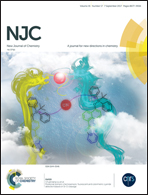Preparation and evaluation of mesoporous carbon derived from waste materials for hybrid-type Li–air batteries†
Abstract
Minimizing the use of expensive catalysts or developing inexpensive catalysts is an important issue for commercializing Li–air batteries and fuel-cell systems. In this regard, supported catalysts have attracted huge attention because they enable lower amounts of catalyst to be used. Porous carbons, such as carbon black and activated carbon, are generally used as a support for catalytic materials due to their high electrical conductivity, good chemical stability, and low cost. Herein, we have successfully prepared mesoporous carbon (MPC) derived from waste materials, such as waste paper and fruit peel, with a high surface area (538.42 m2 g−1) and a suitable average pore diameter (6.5992 nm). In addition, our MPC exhibited higher electrocatalytic activity than Vulcan carbon black, which was ascribed to its high surface area and suitable average pore diameter. Notably, we also demonstrated an MPC-based hybrid-type Li–air battery that uses a Li–metal anode and exhibits a good round-trip efficiency (MPC: 70.0% vs. Vulcan: 58.9%) and cycling performance over 20 cycles. To the best of our knowledge, this is the first report of an MPC-based, rechargeable, hybrid-type Li–air battery.



 Please wait while we load your content...
Please wait while we load your content...